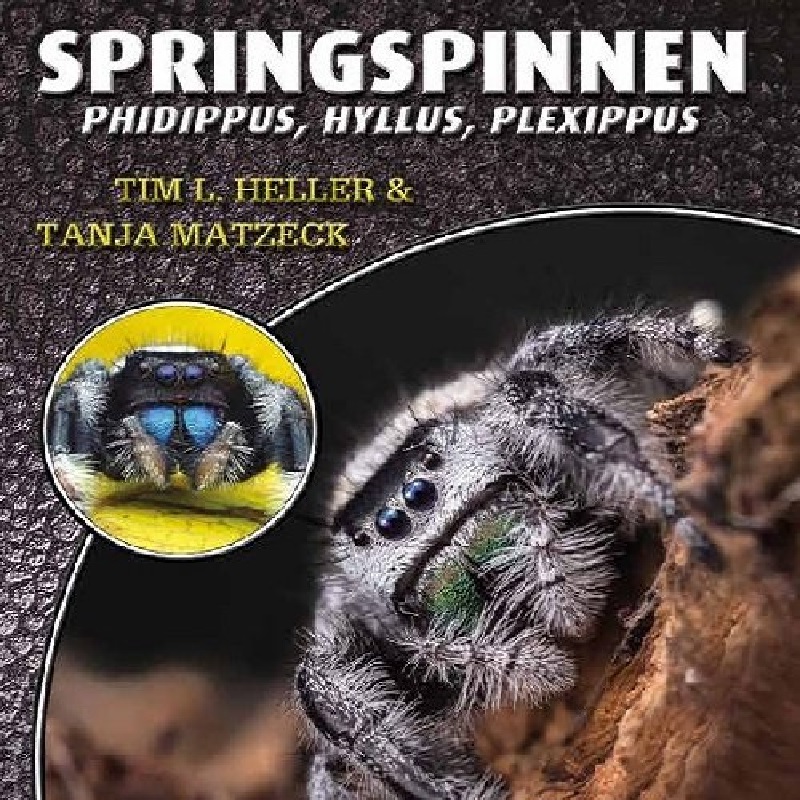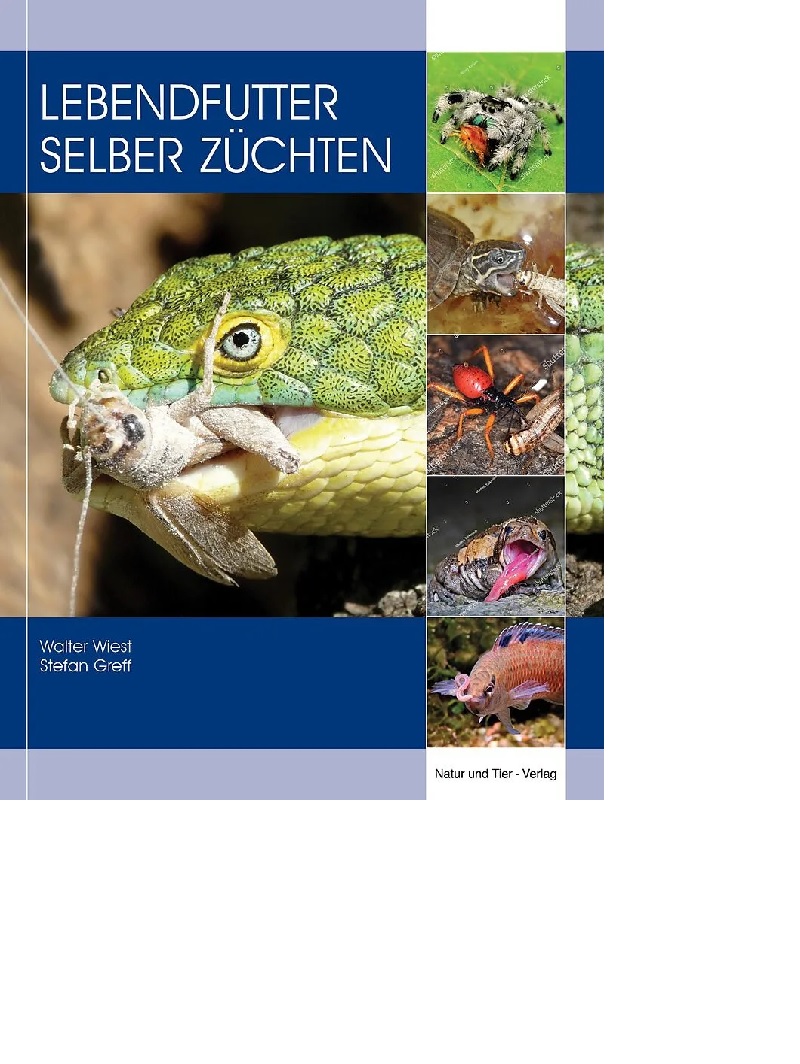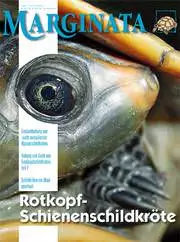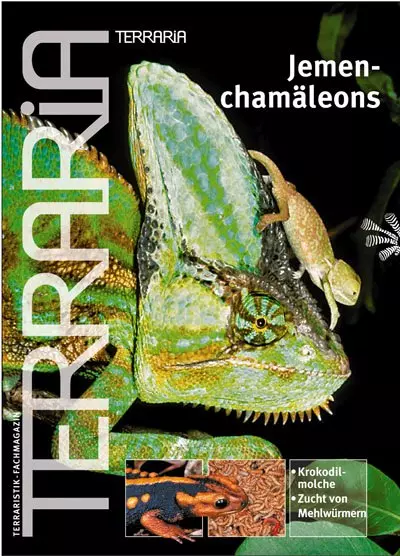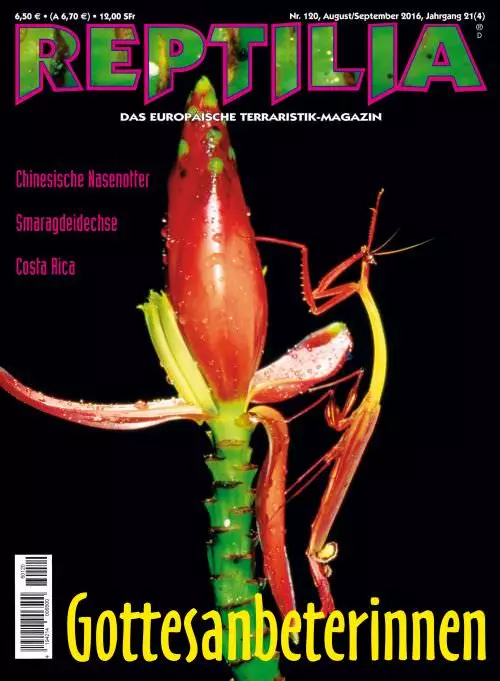

CHF 11.20
Stock: 0
Available in 1-3 days, acquisition time 7 days

Reptilia 50 - Riesenschildkröten
Buschmeister
Kragenechse
Inhalt:
- 2 REPTILIA zum 50.
- 12 GROSSES PREISRÄTSEL
- 15 TERMINE
- 18 WESTERN HERP PERSPECTIVES
Die Königspython-Pyramide
von B. Love
- 20 FOTOREPORTAGE
Riesenschildkröten
von J. Vaverde
- 28 HERPETOFAUNA
Die Spornschildkröten (Centrochelys sulcata)
Die Schildkröte, die weint
von B. Deveaux, SOPTOM
- 34 REPORTAGE
Die El Niño-Phänomene 1995/96 sowie 1997/98 und die Riesenschildkröten (Chelonoidis nigra vandenburghi, Chelonia: Testudinidae) auf dem Vulkan Alcedo, Isabela, Galápagos
von C. Márquez, H. Snell & H. Snell
- 38 REPORTAGE
Schutz der Seychellen-Riesenschildkröten
von J. Gerlach
- 42 REISE
Pulau Tioman – Perle im Südchinesischen Meer
Teil 1
von W. Grossmann & F. Tillack
- 51 PORTRÄT UND POSTER
Phrynohyas venulosa
von H. Werning
- 56 HALTUNG UND ZUCHT
Der Zentralamerikanische Buschmeister (Lachesis stenophrys COPE, 1876) im Terrarium
von A. Hohmeister
- 64 HALTUNG UND ZUCHT
Die hohe Welt der buten Stelzenläuferleguane
oder: Meine Erfahrungen bei der Haltung von Plica plica
von S. Flicke
- 68 HALTUNG UND ZUCHT
Ein echter Saurier im Terrarium: Die Australische Kragenechse (Chlamydosaurus kingii)
von T. Hörenberg
- 74 REPORTAGE
Das Überleben des schmackhaften Grünen Leguans – Neue Wege beim Art- und Habitatschutz für Iguana iguana, mit Anmerkungen zu Caiman crocodilus fuscus
von K. Kunz
- 85 KLEINANZEIGEN
- 92 RAT & TAT
- 93 BIBLIOTHEK
- 104 GLOSSE
Auf der Suche nach Uracentron azureum
Teil 2
von H. Werning
0 of 0 reviews
Login
Similar products


